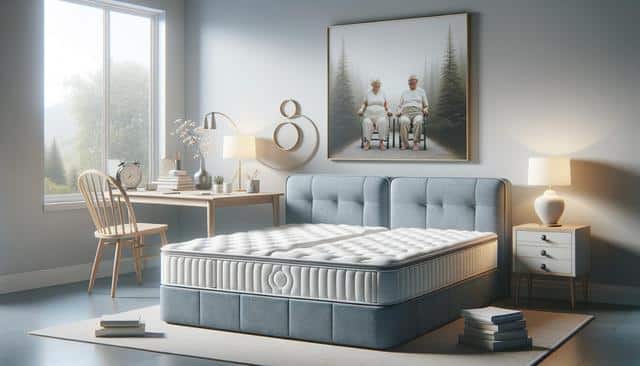Comfort and Support: Choosing a Mattress for Seniors
Finding the right mattress can significantly improve sleep quality and overall well-being for seniors.

Understanding the Sleep Needs of Seniors
As people age, their sleep patterns and physical needs begin to change. Seniors often experience lighter sleep and more frequent awakenings during the night. Conditions such as arthritis, back pain, and joint stiffness can also make it difficult to get comfortable. Therefore, the mattress that supported someone well in their younger years might no longer be suitable. To address these shifts, certain mattress features become more important with age, such as pressure relief, proper spinal alignment, and ease of movement.
Seniors may benefit from mattresses that provide a balance between softness and firm support. Too much firmness can cause pressure on sensitive areas like the shoulders and hips, while excessive softness may lead to poor posture during sleep. Additionally, temperature regulation is crucial, as older adults often have a harder time maintaining a consistent body temperature throughout the night. Choosing a mattress tailored to these needs can help reduce discomfort and promote restful sleep.
Materials and Construction That Make a Difference
The construction and materials of a mattress play a significant role in comfort and support. Memory foam and latex are two commonly recommended materials for seniors because of their conforming properties and pressure relief.
- Memory foam: Offers contouring support and reduces motion transfer, which is helpful if one partner moves during the night.
- Latex: Naturally responsive and breathable, offering a bouncier feel that makes it easier to move around.
- Hybrid designs: Combine innerspring and foam or latex layers to deliver both support and cushioning.
Edge support is another key factor to consider. Seniors who have difficulty getting in and out of bed may find that reinforced edges provide more stability. Additionally, mattresses with zoned support systems can help target key pressure points, offering firmer support where needed and softer cushioning elsewhere.
Firmness Levels and Adjustability
Firmness is not one-size-fits-all, especially when it comes to seniors. The ideal firmness level often depends on the individual’s body weight, sleeping position, and medical conditions. For instance, heavier individuals may require a firmer surface to prevent sagging, while lighter individuals might prefer a softer feel for more pressure relief.
Here are some general guidelines:
- Side sleepers: Medium to medium-soft firmness to cushion shoulders and hips.
- Back sleepers: Medium-firm to maintain spinal alignment without excessive sinkage.
- Stomach sleepers: Firmer surfaces to prevent the hips from sinking too far.
Adjustable beds are another option worth considering, especially for seniors dealing with chronic pain or limited mobility. These beds can elevate the head or feet to improve circulation, reduce snoring, and alleviate pressure on joints. Pairing an adjustable base with a compatible mattress can enhance comfort and accessibility.
Health and Safety Considerations
Choosing a mattress for seniors should also involve considering health and safety features. Hypoallergenic materials can help reduce exposure to dust mites and allergens, which is particularly beneficial for those with respiratory issues. Additionally, certifications like CertiPUR-US or OEKO-TEX Standard 100 indicate that the mattress has been tested for harmful chemicals and emissions.
For seniors prone to falls or mobility challenges, the height of the mattress is an important factor. A mattress that is too high or too low can make it difficult to get in and out of bed safely. Ideally, the bed height should allow feet to rest flat on the floor when sitting on the edge.
Also, consider the following safety features:
- Non-slip mattress covers or bases to prevent shifting
- Handles or grips for easier repositioning
- Waterproof or washable covers for easier maintenance
These small but important details can contribute to a safer and more comfortable sleeping environment for older adults.
Shopping Tips and What to Look For
When shopping for a mattress for a senior, it’s essential to consider both online and in-store options. Many retailers offer trial periods, which can be especially helpful for testing comfort over time. Look for companies that provide generous return policies and warranties, allowing time to evaluate whether the mattress supports long-term comfort and durability.
Here are a few tips to guide the shopping process:
- Read reviews from other older adults to understand how the mattress performs for similar needs.
- Check for white glove delivery options, which include setup and old mattress removal.
- Compare specifications like material layers, firmness ratings, and temperature regulation features.
Also, it’s helpful to bring along or consult with a caregiver or family member when making the decision, especially if mobility or cognitive issues are a factor. Having support during the selection process can ensure that all important aspects are considered.
Ultimately, the goal is to find a mattress that aligns with the individual’s personal comfort preferences, medical considerations, and lifestyle needs. A thoughtful purchase can enhance sleep quality and contribute to better overall health and well-being.
Conclusion: Prioritizing Comfort and Wellness in Later Years
For seniors, a supportive and comfortable mattress is more than just a luxury—it’s an essential part of maintaining health and independence. By understanding the unique needs of aging bodies and the features that cater to those needs, older adults and their caregivers can make informed decisions. Whether it’s improved pressure relief, better alignment, or easier mobility, the right mattress can truly make a difference in quality of life. Prioritize what matters most, from material quality to safety features, and enjoy restful nights that support active, fulfilling days.